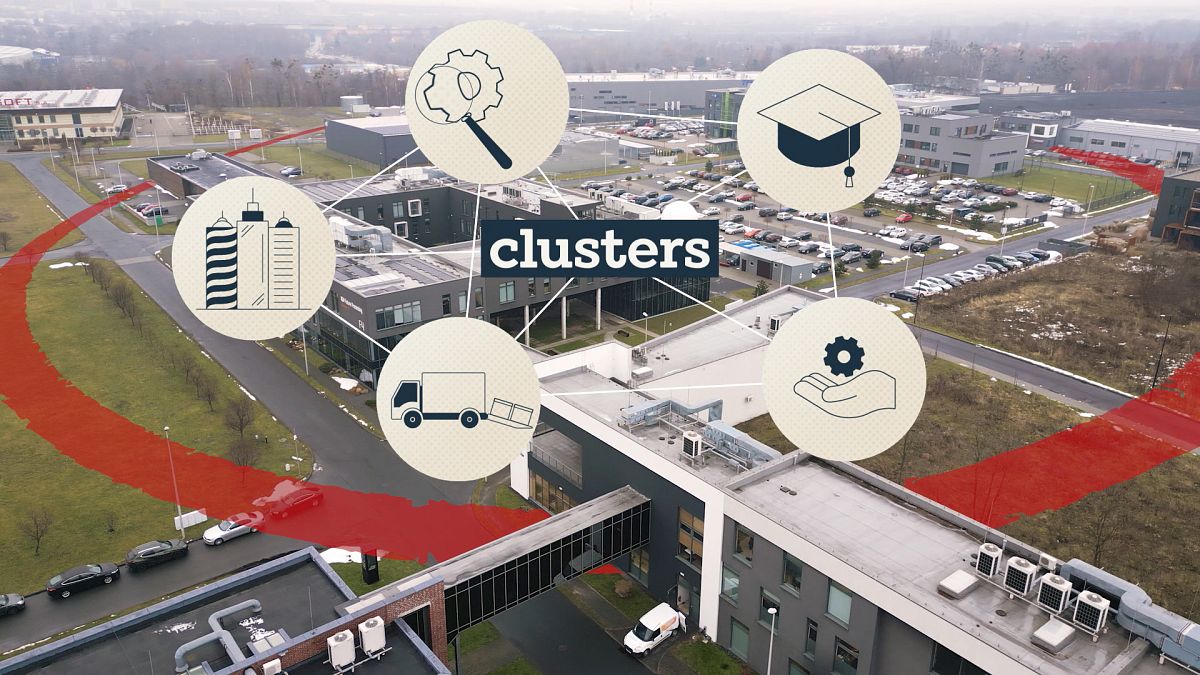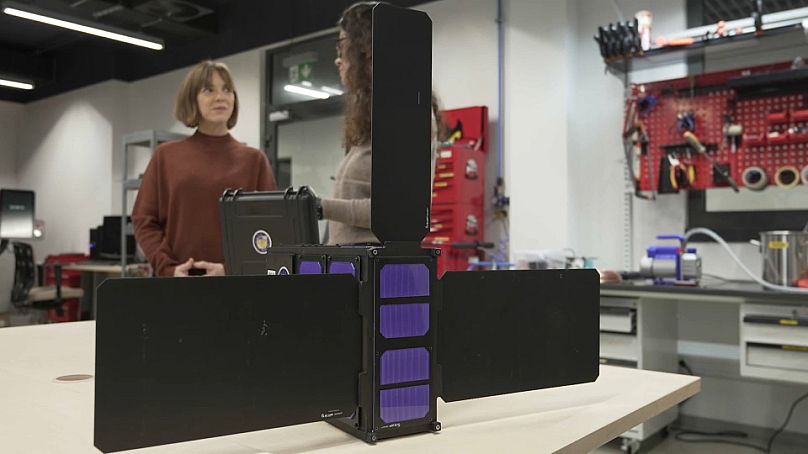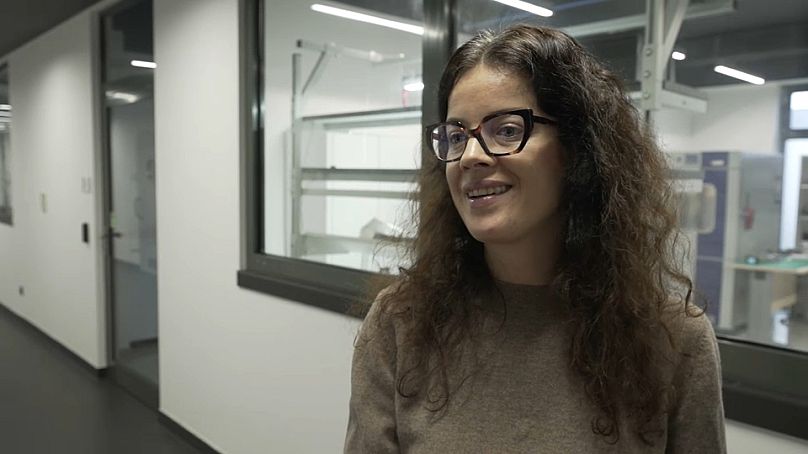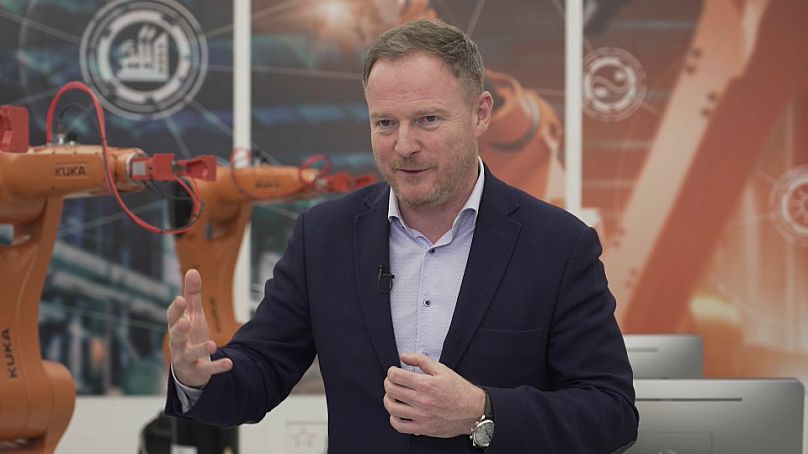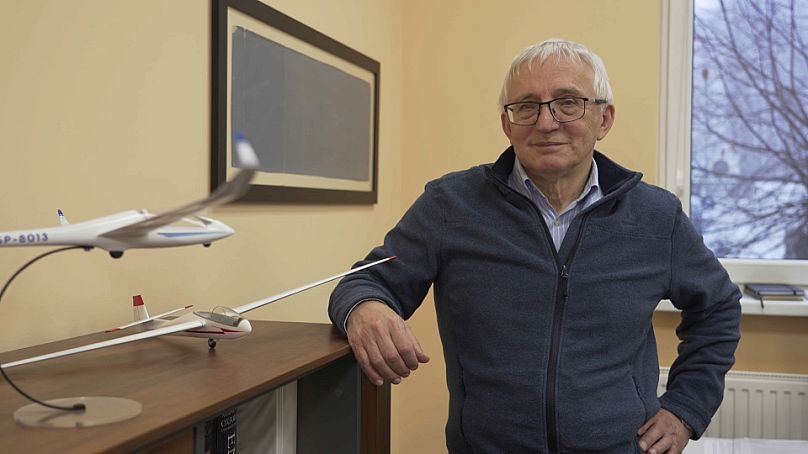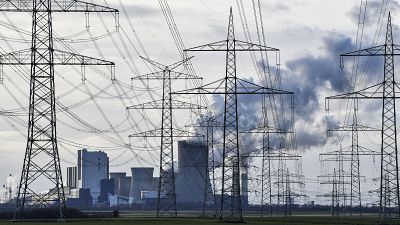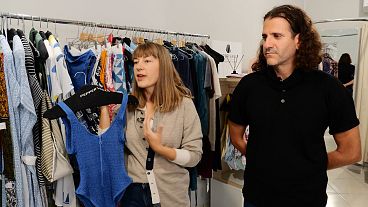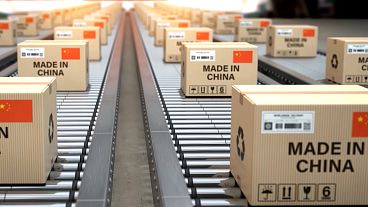In this episode of Business Planet, we travel to Poland to discover how the Silesian Aviation Cluster is helping more than 100 European firms extend their international reach by sharing knowledge and innovative solutions.
Polish space technology company KP Labs has just launched its first satellite, one of the many technologies developed as part of the Silesian Aviation Cluster.
This cluster grew out of the region's glider industry and is now home to 120 aerospace companies.
KP Labs sent nanosatellite Intuition-1, and an onboard data processing unit called Leopard into space on Elon Musk's SpaceX's Falcon 9 last year. The Intuition-1 mission is co-financed by the Polish National Research and Development Center.
"Pictures from the sensor go to the Leopard, then Leopard performs different algorithms, different operations and then we downlink this information, we get this information to the ground station," explained Helena Milevych, the Head of Products at KP Labs.
Processing the earth observation data on board closes the gap between detecting a problem and acting on it - whether this is crisis management such as mapping a fire, or flood or crop applications.
"Usually you will see the entire field being green or yellow but sometimes when there is something going wrong with the crops, for example, the disease starts to develop, you will not notice that because the colour you see won't change," said Grzegorz Łada, the Head of Operations at KP Labs.
"The hyperspectral image is more complex. You can actually see ten different shades of green. So it helps you see that something bad is happening before a human would notice," he added.
The soil mapping project is a collaboration with the European Space Agency.
How has the Silesian Aviation Cluster benefitted European businesses?
KP Labs has been part of the cluster since it was founded in 2016 with just three people. Now it's many times bigger, and the cluster has brought them an international reach.
"One of the biggest conferences that we went to was the Space Tech Expo in the US, and that was really important it was the first conference for us so we had a chance to go there thanks to our cooperation with the cluster," Helena Milevych told Business Planet.
Black coal mining played a vital role in Silesia. But since the 1990s the industry has been decimated.
EU and foreign investment plus a pool of skilled local people led to the creation of the aviation cluster. Considered a key Polish cluster, it receives government funding.
"Yearly we are able to organise about 70, 75, 80 different missions, trade missions around the world for our members. So this is really huge," revealed Krzysztof Krystowski, the President of the Silesian Aviation Cluster.
"We spent around sometimes even €2 million yearly to support of our members to be present to promote their export sales."
In Europe, there are 100s of clusters. Silicon Saxony in Germany is a world leader in the production of microelectronics, while Mine The Gap is a cluster network in the critical raw materials sector. All promote competitiveness, resilience, and innovation.
Clusters are geographic concentrations of not just businesses but Research and Development centres, universities, suppliers, and service providers. They boost regional GDP and lower unemployment.
A lifeline for small and medium businesses
Around 70% of cluster companies are SMEs, and for some of those, clusters can help them weather the most difficult of storms.
Andrzej Papiorek is the CEO of Wytwórnia Konstrukcji Kompozytowych. He told Business Planet that "COVID [...] completely killed aviation for some time and in this moment, participation of the cluster became very fruitful for us because it gave us a chance to get some equipment and this equipment was a key for new products."
The company now specialises in manufacturing parts for drones.
"This is 80% of our activity. We are producing some drones for military purposes, components for drones," Andrzej Papiorek added. "To be honest I could not imagine right now what could happen if we are not a member of the cluster for me it was a key item."
The Silesian Aviation Cluster has changed the local landscape both literally, and economically, bringing new jobs, companies and investments.
